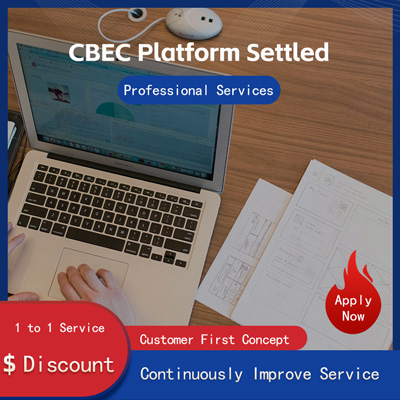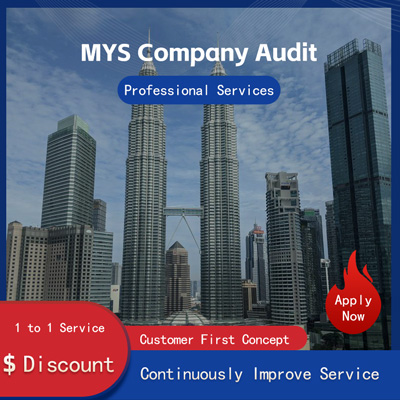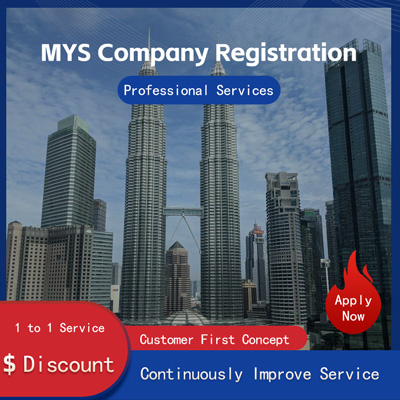
Comprehensive Guide to Amazon Cross-Border E-Commerce Store Opening and Cost Breakdown
Detailed Interpretation of Amazon Cross-border E-commerce Store Opening Process and Costs
In recent years, with the rapid development of the global e-commerce industry, an increasing number of merchants have begun to pay attention to cross-border e-commerce business. Among them, Amazon, as one of the largest e-commerce platforms in the world, has attracted the attention of countless small and medium-sized enterprises. However, for those who are new to Amazon cross-border e-commerce, how to open a store, what steps are required, and how much it costs are often difficult problems. This article will provide a detailed interpretation of Amazon's cross-border e-commerce from two aspects the opening process and costs, helping merchants who are interested in entering this field better understand its operational methods.

Detailed Explanation of the Store Opening Process
Firstly, opening an Amazon cross-border e-commerce store requires going through a series of basic steps. These steps can be divided into three stages preliminary preparation, account registration, and subsequent operation.
1. Preliminary Preparation
Before officially registering, merchants need to make adequate preparations. This includes selecting suitable product categories, clarifying target markets, and formulating initial marketing strategies. For example, Amazon has strict classification rules, and different categories may require different qualification certificates; for instance, food categories need to submit food safety certification. Merchants also need to study the consumer habits of their target market, such as language preferences and payment methods, so that later promotions can more accurately reach users.
News reports show that in recent years, many Chinese companies have successfully expanded overseas markets through Amazon. For example, a home goods company achieved significant sales growth by deeply analyzing the purchasing needs of European consumers and integrating local cultural elements into product design. This indicates that market research and positioning at the early stage are crucial.
2. Account Registration
After completing the preliminary preparation, merchants can start registering an Amazon seller account. Currently, Amazon supports two types of seller accounts individual seller accounts and professional seller accounts. Individual seller accounts are suitable for small merchants trying out initially, while professional seller accounts are more appropriate for businesses with a certain scale or plans for long-term development. Although the latter requires a monthly subscription fee of $39.99, it offers more functions and services, such as batch uploading product lists and obtaining sales data reports.
During the registration process, merchants need to fill in company information, contact information, and bank account information, and submit necessary documents to verify identity. It is worth noting that Amazon has high requirements for seller compliance, and any false information may result in account bans. Merchants must ensure that the provided materials are true and valid.
3. Subsequent Operation
After registration is complete, merchants can begin listing products and conducting daily management. The core work during this phase includes optimizing product page listings Listings, handling orders, maintaining customer relationships, and monitoring competitor dynamics. To improve conversion rates, merchants should regularly update inventory information to ensure sufficient product supply. At the same time, using Amazon’s advertising tools can further expand brand influence.
It is worth mentioning that Amazon also offers FBA Fulfillment by Amazon service, where Amazon handles warehousing, shipping, and customer service. Although using FBA incurs additional costs, it can greatly alleviate the logistics pressure on merchants, especially suitable for newcomers.
Analysis of Store Opening Costs
In addition to the above processes, Amazon cross-border e-commerce also involves various cost expenditures. These costs can be broadly categorized into fixed costs and variable costs.
1. Fixed Costs
Fixed costs mainly include monthly rental fees and commission percentages. As mentioned earlier, professional seller accounts require a monthly subscription fee of $39.99. Amazon charges different commission percentages based on product categories, typically ranging from 6% to 45%. For example, the commission percentage for electronic products is generally 15%, while clothing categories are as high as 20%.
News mentions that some domestic merchants encountered difficulties in profitability due to neglecting the commission mechanism. Professional advice suggests that merchants should fully consider all costs when pricing and avoid blindly following low-price competition.
2. Variable Costs
Variable costs primarily cover storage fees, logistics fees, and advertising investments. If FBA services are chosen, merchants need to pay corresponding storage fees based on storage space and time. At the same time, international logistics costs are also a significant expenditure, especially when shipping from China to Europe and America, freight often accounts for a large proportion of total costs.
To increase exposure, merchants can use Amazon’s advertising system to place paid ads. These ad formats vary, including search ads targeting specific keywords and brand ads displayed on the homepage. However, the effectiveness of advertisements largely depends on keyword selection and bidding strategies, so merchants need to have certain data analysis capabilities.
Conclusion
In summary, opening a store on Amazon cross-border e-commerce is not a simple task. It tests both merchants' professional knowledge and their execution ability. Every link, whether in the early preparation or later operation, requires careful planning and implementation. At the same time, merchants need to reasonably control costs and balance short-term benefits with long-term development. With the guidance of the aforementioned principles and continuous effort and innovation, every seller has the potential to succeed on the Amazon platform.
Helpful (0)
No help (0)
Still have questions after reading? More than 98,000 users have contacted us. Please fill in the following information to obtain business information.

Service Scope
MoreRecommended for You
- A Crucial Step in Trademark Registration Why You Can't Skimp on CR Fee
- How Much Does It Cost to Register a Trademark in the U.S.? A Clear Breakdown of Fees!
- Want to Register a Trademark in the U.S.? Master These Key Steps to Launch Your Brand Smoothly!
- How to Apply for a US Trademark? 10 Key Tips to Nail It in One Go!
- How to Successfully Register a Trademark in the U.S. for a Singapore Co. A Practical Guide
- How to Apply for a US Trademark After Registering a Company in Singapore? A Detailed Guide on Costs and Process
- A Comprehensive Analysis of US Companies Registering Trademarks in China How Much Do You Know?
- Guide to Registering a U.S. Trademark for Singapore Businesses Costs, Process Practical Tips
- How to Register a Trademark in the U.S. for a Shenzhen Company? Here's a Complete Guide!
- U.S. Trademark Registration Guide Step-by-Step Process Key Considerations
- Things to Know About U.S. Trademark Registration Is a Business License Needed? Cost Breakdown Here
- Shenzhen Startups Must Read US Trademark Registration Requirements Process Explained
- How to Register a Company and Apply for a Trademark in the U.S. What Documents and Procedures Are Needed?
- How to Easily Register a Company Trademark in the U.S. and Hong Kong - A Detailed Guide!
- 7 Key Tips You Must Know to Apply for a Trademark in the U.S.
- Do You Need a Trademark to Establish a Subsidiary in Hong Kong? A Deep Dive into Why This Step is Crucial
- Hong Kong Trademark Registration Costs Explained Boosting Business Globalization
- Trademark Registration in the U.S. Company or Individual? Let's Find Out!
- How to Register a Chinese Trademark in the U.S.? A Complete Guide with Practical Tips
- U.S. Trademark Registration Costs Explained All You Need to Know!


 ONE
ONE








Customer Reviews
Small *** Table
December 12, 2024The experience was very good. I was still struggling to compare it with other companies. I went to the site a few days ago and wanted to implement it as soon as possible. I didn't expect that everything exceeded my expectations. The company is very large, with several hundred square meters. The employees are also dedicated and responsible. There is also a wall of certificates. I placed an order on the spot. It turned out that I did not make a wrong choice. The company's service attitude is very good and professional. The person who contacted me explained various things in detail in advance. After placing the order, the follow-up was also very timely, and they took the initiative to report the progress to me. In short, I am very satisfied and recommend this company!
Lin *** e
December 18, 2024When I first consulted customer service, they recommended an agent to me. They were very professional and patient and provided excellent service. They answered my questions as they came in. This 2-to-1 service model is very thoughtful. I had a lot of questions that I didn’t understand, and it’s not easy to register a company in Hong Kong. Fortunately, I have you.
t *** 7
December 19, 2024I originally thought that they only did mainland business, but I didn’t expect that they had been doing Hong Kong business and were doing very well. After the on-site interview, I decided to ask them to arrange the registration of my Hong Kong company. They helped me complete it very quickly and provided all the necessary information. The efficiency was awesome. It turns out that professional things should be done by professionals.👍
b *** 5
December 16, 2024In order to register a company in Hong Kong, I compared many platforms and stores and finally chose this store. The merchant said that they have been operating offline for more than 10 years and are indeed an old team of corporate services. The efficiency is first-class, and the customer service is also very professional.